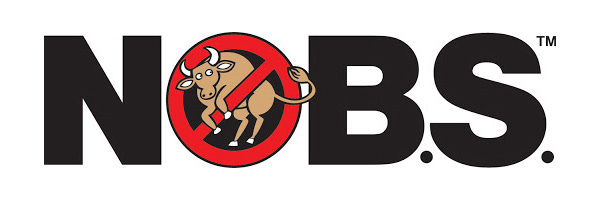10 Advertising Rules from a Living Legend
Dan Kennedy on making sure your marketing isn't 'full of it'
All of the greats had rules. Examples mentioned in recent editions of this report include:
The 16 Principles of Scientific Advertising (Claude Hopkins)
The 17 Axioms of Copywriting (Joseph Sugarman)
The 22 Immutable Laws of Marketing (Al Ries & Jack Trout)
It’s no wonder I was so into rules as a young marketer. Eventually, I even published a few of my own, including seven rules for selecting DRTV products and 10 rules for DRTV commercials. (I guess I was less ambitious than the masters above.)
Today, we’re going to look at another list of 10 DR rules — this one by someone older, wiser and much more well-known than me: Dan S. Kennedy.
DR Dynamite!🧨
Welcome again to my new feature where I write about high-impact advertising wisdom from the ‘Masters of Marketing,’ specifically tried-and-true (T&T) techniques that apply to my area of expertise: direct-response advertising.
A word on the word “rules” — I often use the term colloquially. That is, I don’t necessarily mean hard-and-fast precepts that must be followed. As you can see from the titles above, sometimes I mean “principles” or “axioms.” But a few of the greats did indeed mean RULES. Ries & Trout obviously weren’t playing around. They viewed their discoveries as unchangeable laws of the marketing universe.
Kennedy, too, is that sort of guy. When he says rules, he means it! And he wasn’t limiting himself, either. My lists are specific to DRTV, but what we’re going to see from Kennedy below is 10 ‘musts’ that he believed apply to all forms of marketing and advertising.
First, for those unfamiliar with his name and his work, here’s a quick Kennedy bio from my new assistant.
Dan S. Kennedy is a highly influential direct marketer, strategic advisor, consultant, and business coach, best known as the author of the popular “No B.S.” book series. He is recognized as one of the best copywriters in the world with a considerable number of business owners worldwide adopting strategies from his newsletters, coaching programs, and group meetings to boost their businesses.
Kennedy started his career as a copywriter, quickly achieving considerable success and becoming a millionaire within a short time. His book “The Ultimate Sales Letter” has been incredibly popular among entrepreneurs and online business owners seeking quick success in their respective industries.
In addition to writing, Kennedy is the founder of Magnetic Marketing and has made a name for himself as a successful public speaker, earning around $100,000 per speech.
{Note: In 2022, ClickFunnels founder Russell Brunson announced he had purchased Magnetic Marketing and all of Kennedy’s intellectual property, including his books, audio programs, webinars and other combined works. The rumor is this was following a near-death health scare for Kennedy.}
Now that we have that out of the way, here’s Master Kennedy’s famous list of rules for marketing and advertising.
There will always be an offer or offers.
There will be a reason to respond right now.
You will give clear instructions on how to order.
There will be tracking, measurement and accountability.
Only no-cost branding.
There will be follow-up.
There will be strong copy.
It will look like mail-order advertising.
Results rule. Period.
You will be a tough-minded disciplinarian and put your business on a strict direct marketing diet.
To get the full download on all of these rules, you’ll need to buy the books. The one I read most recently is an anthology of Kennedy’s greatest hits from the “No B.S.” series, which is available here.
For today, let’s briefly discuss his first three rules.
Rule #1: There will always be an offer.
It’s amazing to me how many marketers violate this rule. They seem to think that a simple CTA like “go to my website” — or worse yet, just throwing up a URL without calling attention to it — will be enough to ‘drive to Web.’ Others are savvy enough to at least throw in a promo code, but how many tie that to a meaningful, motivating offer?
The challenge reminds me of the one we faced when guarantees stopped being novel. In Al Eicoff’s day, “or your money back!” was original and powerful. Then it became standard and expected, so we had to start upping the stakes. Thirty days, 60 days, five years, 10 years, lifetime! We’ll pay you back twice what you paid! Three times! We’ll pay for the return shipping, too! Eventually, this all found its level and settled into an expectation that anyone could return anything for a full refund within any reasonable period of time. In fact, the companies that most often stand out now are the ones who don’t have this kind of policy.
Well, it’s the same with offers. In my humble opinion, a 20% off deal with a promo code is about as exciting as a 30-day moneyback guarantee. That is, merely satisfying Kennedy’s rule is hardly enough these days.
Rule #2: There will be a reason to respond now.
This one dovetails nicely with my previous point because a compelling offer is a reason to respond now. That’s why I find myself writing this line quite a lot: “Act now and you’ll also get …” However, Kennedy had something else in mind. He was talking about using a psychological trigger Robert Cialdini calls “scarcity,” that FOMO feeling that if you don’t take advantage of a great offer right now, it will disappear forever. That limited supply will run out, or that limited-time offer will expire.
Major brands struggle with employing this trigger because the typical examples from our world sound too ‘hard sell’ for them. However, there are softer ways of executing on this idea. All it takes is a little creativity. Indeed, it could be argued that something as simple as a holiday sale satisfies the rule (since the sale expires when the holiday ends). However, as Kennedy explained in one of his books, this technique is over-used and can have the effect of training customers to wait for sales before buying. I think of Bed Bath & Beyond (may it rest in peace) where I used to feel like a complete idiot if I didn’t bring at least 10 coupons we had saved from their various mailings.
So what’s a better idea? Guys like Kennedy had a great way of thinking up things that were naturally limited, so it didn’t sound like B.S. when you said supplies were limited. For instance, at a live event, space is physically limited, so it’s true that only so many people can enjoy a particular perk before it’s at capacity — and that’s a powerful motivator to act quickly.
Rule #3: You will give clear instructions on how to order.
I wasn’t quite thinking of this rule when I coined the catch-phrase “confusion is a sales killer,” but it certainly applies. I was on the same wavelength because I had realized that the worst thing you can do when you have a prospect on the hook is slow them down. The path to closing the sale must be fast and frictionless. Or, to use Joseph Sugarman’s famous analogy, you must not have an un-greased section on your slippery slide.
To me, this meant making it crystal clear what they were getting and what it would cost. No “kitchen sink offers” or too-clever hidden charges for “free” items. To Kennedy, this meant telling your near-customer exactly how to buy. In No B.S. Direct Marketing, he wrote:
Most marketers’ failures and disappointments result from giving confusing directions or no directions at all. Confused or uncertain consumers do nothing. And people rarely buy anything of consequence without being asked…
When you put together any marketing tool, ad, flier, sales letter, website, phone script, etc., or any physical selling environment, it should be carefully examined for presumption of knowledge on the consumer’s part, for lack of clarity about what’s expected of them, or for wimpiness about asking clearly and directly for the desired action.
Stop sending out anything without clear instructions.
Speaking of clear, I highly recommend Kennedy’s work to anyone who needs a dose of clear thinking on the topic of advertising and marketing. There’s a section in one of his books where Kennedy claims DR marketers won’t need to hear what he has to say. I disagree. I’ve been a practitioner for 20 years, and I need Kennedy’s no-nonsense advice more than ever. With how rapidly things are changing, it’s so easy to forget that the rules for selling haven’t changed — because they are based in human nature.
Chart Watch 🆓
A PSA for any non-veterans or forgetful folks who might be freaking out right now: Media sucks in May, and it’s about to get worse as Memorial Day weekend kicks off the summer. But don’t despair! Relax, grab a cocktail and enjoy the sunshine. It’s scientifically proven that taking time to de-stress and connect with nature has positive effects on the mind. Take this opportunity to recharge, and embrace the possibility of being inspired with bright ideas for the upcoming selling season.
Speaking of relieving stress…
Inscents Waterfall
Pitch: “The most beautiful way to relive stress and anxiety”
Marketer: Catch Creation
Back in February, I wrote that this campaign had been “hanging around the Top 50 since last quarter, steadily gaining momentum.” Well, now it has been on the charts for 30 weeks and has broken into the DRMetrix Top 10.
It’s an odd product, though. I admit I would never have green-lit anything like it for DRTV. On the one hand, it’s unique and visually interesting to the point of generating a “wow” reaction. On the other hand, incense burners don’t have a TAM of one per household (i.e. they’re not “mass market” in our sense of the word), and they don’t solve a real problem. The commercial tries to make this item a cure for stress, but that’s what I call a “contrived problem.” People aren’t buying an incense burner because they’re stressed — although it isn’t necessarily a bad idea to tap into the stress and anxiety epidemic.
Let’s just call this what it is: a novelty item. That’s fine. Novelty items can sell, for a time at least. Apparently now is that time.
Recent Tests🔒
Last week, I shared news of a potential ‘Fan War’ brewing. That is, two DRTV marketers with previous success in the fan category are testing similar products. In my analysis, I mentioned that the bigger threat to both is the 800-lb portable air conditioner in the room.
Well, that cool gorilla just dropped its eighth brand extension. 👇





